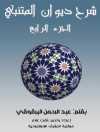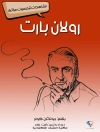Bringing together a broad range of case studies written by a team of international scholars, this Concise Companion establishes how manuscripts and printed books met the needs of two different approaches to literacy in the early modern period.
- Features essays illustrating the particular ways a manuscript and a printed book reflect the different emphases of an elite, private and an egalitarian, public culture, both of which account for the literary achievements of the Renaissance
- Includes wide-ranging essays, from printing the Gospels in Arabic to a contemporary reconceptualization of Shakespeare’s Titus Andronicus
- Increases accessibility through a rubric organized around archival and manuscript studies; the provenance of texts and the authority of editions; and studies of genre, religion and literary history
- Announces the recovery of archival documents, which in some instances are over four hundred years old
- Places translations of Milton’s Latin, Greek, and Italian alongside the original texts to increase accessibility for a wide audience of students and scholars
- Provides an invaluable platform for highlighting on-going attention to the history of the book and its corollary subjects of reading and writing practices in the 1500s and 1600s
İçerik tablosu
Notes on Contributors x
Acknowledgements xiv
Introduction xv
Edward Jones
Part I Manuscript Studies 1
1 Stanford University’s Cavendish Manuscript: Wolsey, Elizabeth I, Shakespeare, and Milton 3
Elaine Treharne
2 Texts Presented to Elizabeth I on the University Progresses 21
Sarah Knight
3 Analysing a Private Library, with a Shelflist Attributable to John Hales of Eton, c.1624 41
William Poole
4 Young Milton in His Letters 66
John K. Hale
5 The Itinerant Sibling: Christopher Milton in London and Suffolk 87
Edward Jones
6 Milton, the Attentive Mr Skinner, and the Acts and Discourses of Friendship 106
Cedric C. Brown
Part II Printed Books 129
7 Printing the Gospels in Arabic in Rome in 1590 131
Neil Harris
8 Tyranny and Tragicomedy in Milton’s Reading of The Tempest 150
Karen L. Edwards
9 The Earliest Miltonists: Patrick Hume and John Toland 171
Thomas N. Corns
10 The Ghost of Rhetoric: Milton’s Logic and the Renaissance Trivium 188
Jameela Lares
Part III Production, Dissemination, Appropriation 207
11 Misprinting Bartholomew Fair: Jonson and ‘The Absolute Knave’ 209
John Creaser
12 Reliquiae Baxterianae and the Shaping of the Seventeenth Century 229
N.H. Keeble
13 Marvell and the Dutch in 1665 249
Martin Dzelzainis
14 Did Milton Read Selden? 266
Sharon Achinstein
15 Hands On 294
Neil Forsyth
16 Shakespeare with a Difference: Dismembering and Remembering Titus Andronicus in Heiner Müller’s and Brigitte Maria Mayer’s Anatomie Titus 322
Pascale Aebischer
By Ferry, Foot, and Fate: A Tour in the Hebrides 346
Andrew Mc Neillie
Index 354
Yazar hakkında
Edward Jones is a Regents Professor of English at Oklahoma State University and the Editor of Milton Quarterly. His research interests centre on seventeenth-century archival records created by the English state, church, and parish and how such documents inform the life and writings of John Milton. Book-length publications include Milton’s Sonnets: An Annotated Bibliography, 1900-1992 and , Young Milton: The Emerging Author, 1620-1642. A selection of his essays can be found in RES, JEGP, A Concise Companion to Milton, The Oxford Handbook of Milton, and Milton in Context.












